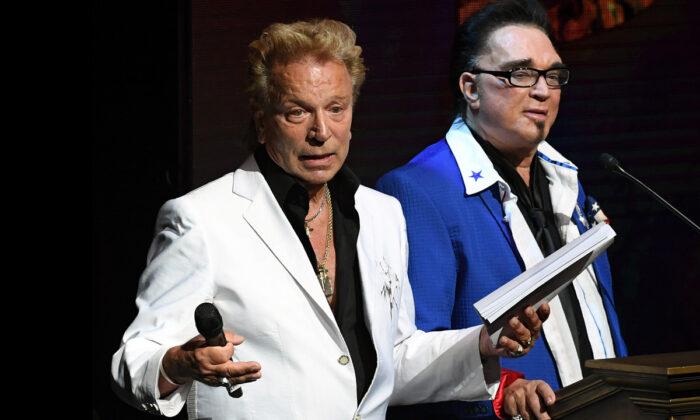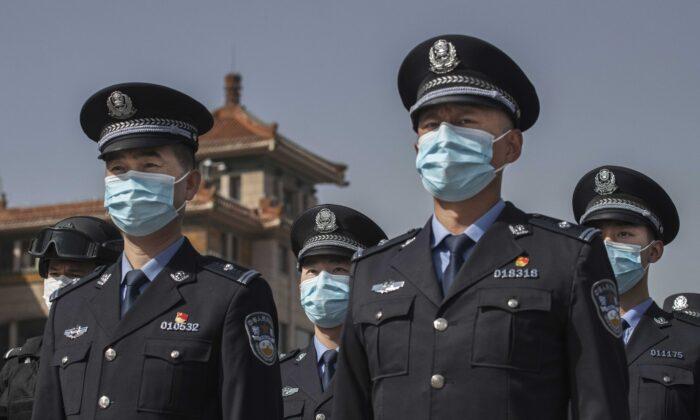Commentary
The tension between the United States and Iran escalated dramatically in June when Iran’s Revolutionary Guard shot down a U.S. RQ-4A Global Hawk military drone.
The United States said that the incident occurred in international airspace over the Strait of Hormuz, one of the world’s most vital shipping routes. In
claiming responsibility, the Revolutionary Guard said it shot down an “intruding American spy drone” after it entered Iranian airspace.
To be clear, this wasn’t the kind of drone that people fly in the park on a Sunday. It had almost the same wingspan as a Boeing 737, could hit speeds of about 400 miles per hour, and carried a $110 million price tag. This was a significant attack.
According to President Donald Trump, he came very close to ordering a retaliatory strike, but he had a change of heart. “When I asked, how many will die. 150 people, sir, was the answer from a General. 10 minutes before the strike, I stopped it,” he said in a
tweet.
He later explained that there was no rush to strike Iran. He even offered up the possibility that shooting down the drone could have been
an accident carried out by a general acting “loose and stupid.”
Some were critical of the president for
coming so close to ordering a military attack. Others criticized him for
calling off the strike. The drone situation, after all, came on the heels of
attacks on four merchant tankers in May (two Saudi-flagged, one Norwegian-flagged, and one Emirati-flagged) and two tankers in June (Japanese- and Norwegian-owned) in the Gulf of Oman, not far from the Strait of Hormuz. There were no injuries or deaths in those attacks, but explosions crippled the ships, caused structural damage, and forced their crews to abandon ship. Although
Iran denied responsibility, most of the rest of the world has identified it as being responsible.
The Negotiator
The political debate within the United States has focused on the thought that the military was on the brink of an attack before the president called it off. Most commentators (many of whom never believe anything else he says) have taken the president at his word on this point. It should be remembered, however, that he wrote “The Art of the Deal.”
Trump is a negotiator. It serves his purposes to let Tehran leadership believe that the United States was on the brink of military action, regardless of whether it actually was. In reality, he’s
not in a hurry to respond to the attack. He is exploring other options. He has imposed new sanctions on Iran but has also
invited its representatives to further talks. He has not, however, taken the possibility of a military response off the table.
As negotiations are explored, Trump has been moving the United States into a position of strength vis-à-vis Iran.
According to CNN, he gave acting Secretary of Defense Patrick Shanahan the authority to deploy additional military resources to the Middle East. “[W]e’re going to be sending a relatively small number of troops—mostly protective. Some very talented people are going to the Middle East right now and we'll see what happens,” the president told the press.
According to Shanahan, the deployment includes “approximately 1,500 US military personnel and consists of a Patriot battalion to defend against missile threats; additional intelligence, surveillance, and reconnaissance aircraft; an engineer element to provide force protection improvements throughout the region; and a fighter aircraft squadron to provide additional deterrence and depth to our aviation response options.”
Already, the U.S. Navy has more
personnel deployed to the Middle East than anywhere else in the world.
Overdue Preparation
There is another thing that Trump did to prepare for confrontation, and it was probably overdue. On March 26, he signed an
executive order to prepare the United States’ critical infrastructure for an electromagnetic pulse (EMP) attack. An EMP is an intense burst of energy that could be released by a nuclear weapon detonated high in the atmosphere or even by a geomagnetic disturbance caused by natural phenomena such as solar flares.
If such a burst were to hit the nation’s electric grid, power could go out across a large swath of the country, communication systems and other critical infrastructure would be disrupted, military readiness degraded, and it could take a long time to get back up and running. According to a
Heritage Foundation policy paper, if an EMP caused widespread failure of the electric grids, “almost nothing will work, which means that millions of people will die as a result of not being able to refill medical prescriptions, millions more will be without food, and predictable rioting and looting can quickly create a state of anarchy.”
In 2001, Congress created the EMP Commission, which brought together notable scientists and technologists to study the risks associated with EMPs. In 2008, it delivered
its final report, which detailed over 100 recommendations to protect critical infrastructure, including communications, transportation, energy, business, finance, food, and water. As of 2015, none of those recommendations had been implemented. As such, Congress re-established the EMP Commission in 2015–2017 to again examine the threats and to make further recommendations. The
new commission found that the threat to electric grids and other life-sustaining infrastructures was just as great, or greater, than it had been in 2008.
Even if these commissions
overstated the threat, the studies reveal a kind of vulnerability that Iran (
or its allies) might at some point try to exploit. President Trump’s executive order is the first serious attempt to undertake concrete action to harden critical infrastructure (items “so vital to the United States that the incapacity or destruction of such systems and assets would have a debilitating impact on security, national economic security, national public health or safety”) and lessen the risks.
The executive order directs the secretary of Homeland Security to “develop a plan to mitigate the effects of EMPs on the vulnerable priority critical infrastructure.” It also instructs the Department of Defense to focus on ways to prevent EMP attacks and to include the possibility of them in defense planning scenarios. Importantly, it sets several deadlines for action within the next year.
So, putting this all together, the president is positioning himself to negotiate with Iran from a position of strength. That’s his style. He creates an advantage, then exploits it. You might not want to be on the other side of the table from him, but so far he has had more success with international negotiations than many expected. Here’s hoping that he can keep having success with negotiations and that military action never becomes necessary.
Ronald J. Rychlak is the Jamie L. Whitten chair in law and government at the University of Mississippi. He is the author of several books, including “Hitler, the War, and the Pope,” “Disinformation” (co-authored with Ion Mihai Pacepa), and “The Persecution and Genocide of Christians in the Middle East” (co-edited with Jane Adolphe).
Views expressed in this article are opinions of the author and do not necessarily reflect the views of The Epoch Times.





